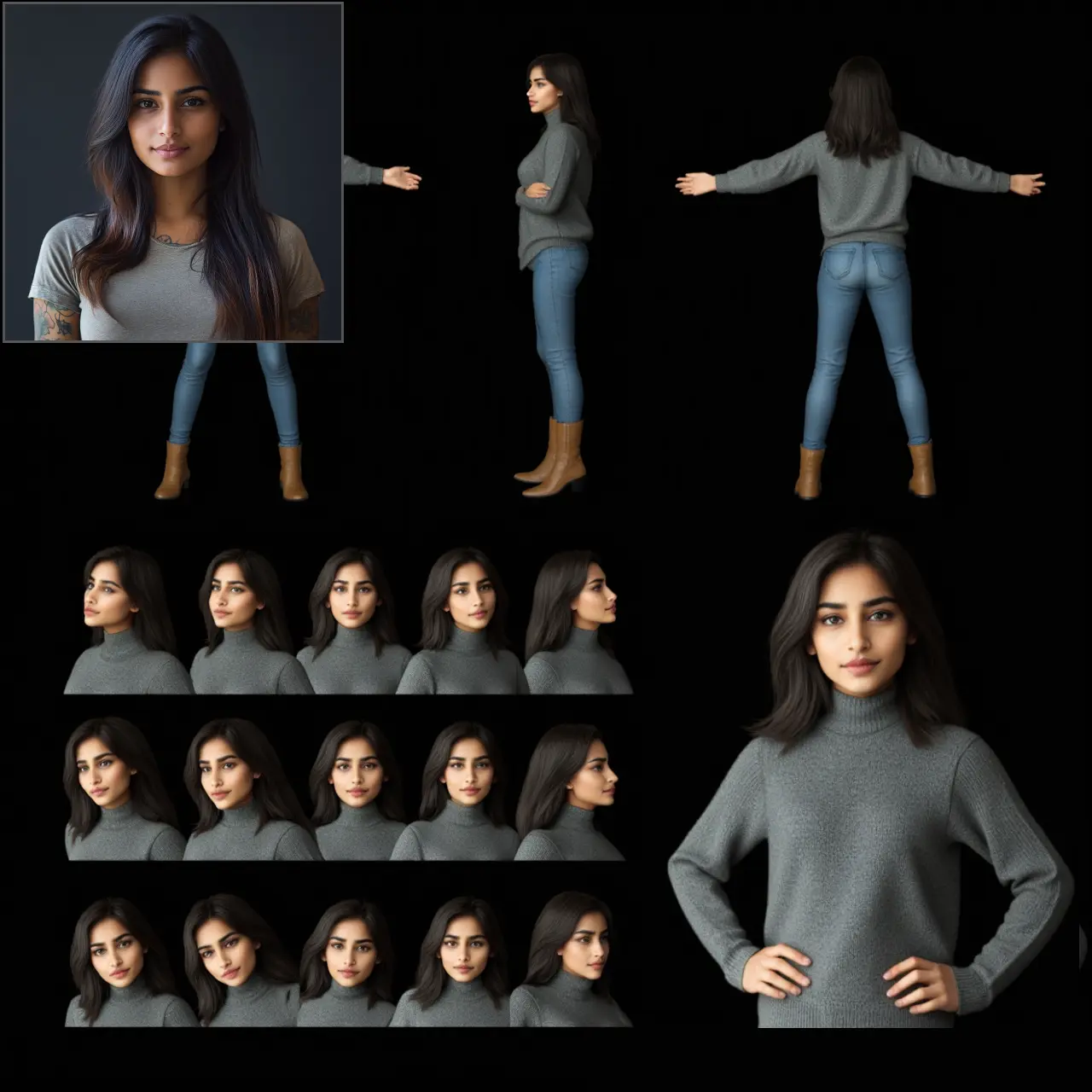ComfyUI Node: LayerMask: Mask Grain
LayerMask: MaskGrain
Category😺dzNodes/LayerMask
chflame163 (Account age: 729days) Extension
ComfyUI Layer Style Latest Updated
2025-03-26 Github Stars
2.13K
How to Install ComfyUI Layer Style
Install this extension via the ComfyUI Manager by searching for ComfyUI Layer Style- 1. Click the Manager button in the main menu
- 2. Select Custom Nodes Manager button
- 3. Enter ComfyUI Layer Style in the search bar
Visit ComfyUI Online for ready-to-use ComfyUI environment
- Free trial available
- 16GB VRAM to 80GB VRAM GPU machines
- 400+ preloaded models/nodes
- Freedom to upload custom models/nodes
- 200+ ready-to-run workflows
- 100% private workspace with up to 200GB storage
- Dedicated Support
LayerMask: Mask Grain Description
Enhance image masks with grain effect for artistic depth and texture manipulation in image processing workflows.
LayerMask: Mask Grain:
The LayerMask: MaskGrain node is designed to enhance your image processing workflow by applying a grain effect to a given mask. This node allows you to add texture and depth to your masks, which can be particularly useful for creating more realistic and visually appealing images. By adjusting the grain intensity and optionally inverting the mask, you can achieve a wide range of artistic effects. The primary goal of this node is to provide a flexible and powerful tool for manipulating masks with grain, making it an essential component for AI artists looking to refine their image generation techniques.
LayerMask: Mask Grain Input Parameters:
mask
The mask parameter is the primary input for this node, representing the mask to which the grain effect will be applied. This mask is typically a tensor that defines the areas of the image to be affected. The mask can be either a 2D or 3D tensor, and if it is 2D, it will be automatically expanded to 3D. The mask serves as the foundation for the grain effect, determining which parts of the image will be textured.
grain
The grain parameter controls the intensity of the grain effect applied to the mask. It is an integer value with a default of 6, a minimum of 0, and a maximum of 127. Adjusting this parameter allows you to fine-tune the amount of grain added to the mask, with higher values resulting in a more pronounced grain effect. This parameter is crucial for achieving the desired level of texture in your masks.
invert_mask
The invert_mask parameter is a boolean option that, when enabled, inverts the input mask before applying the grain effect. By default, this parameter is set to False. Inverting the mask can be useful for reversing the areas affected by the grain, allowing for greater creative control over the final output. This parameter provides an additional layer of flexibility in mask manipulation.
LayerMask: Mask Grain Output Parameters:
mask
The mask output parameter is the resulting mask after the grain effect has been applied. This output is a tensor that retains the same dimensions as the input mask but with the added grain texture. The processed mask can then be used in subsequent image processing steps or as a final output, providing a textured and enhanced version of the original mask.
LayerMask: Mask Grain Usage Tips:
- Experiment with different
grainvalues to achieve various levels of texture and detail in your masks. Start with the default value and adjust incrementally to see the effect. - Use the
invert_maskparameter to explore different creative outcomes. Inverting the mask can sometimes produce unexpected and interesting results. - Combine this node with other mask manipulation nodes to create complex and layered effects. For example, apply transformations or edge enhancements before adding grain.
LayerMask: Mask Grain Common Errors and Solutions:
"Mask dimension mismatch"
- Explanation: This error occurs when the input mask does not have the expected dimensions (2D or 3D tensor).
- Solution: Ensure that your input mask is either a 2D or 3D tensor. If it is 2D, the node will automatically expand it to 3D.
"Invalid grain value"
- Explanation: This error happens when the
grainparameter is set to a value outside the allowed range (0 to 127). - Solution: Adjust the
grainparameter to be within the valid range. The default value is 6, with a minimum of 0 and a maximum of 127.
"Mask inversion failed"
- Explanation: This error may occur if there is an issue with inverting the mask.
- Solution: Verify that the
invert_maskparameter is set correctly. If the problem persists, check the integrity of the input mask to ensure it is not corrupted.
LayerMask: Mask Grain Related Nodes
RunComfy is the premier ComfyUI platform, offering ComfyUI online environment and services, along with ComfyUI workflows featuring stunning visuals. RunComfy also provides AI Playground, enabling artists to harness the latest AI tools to create incredible art.



